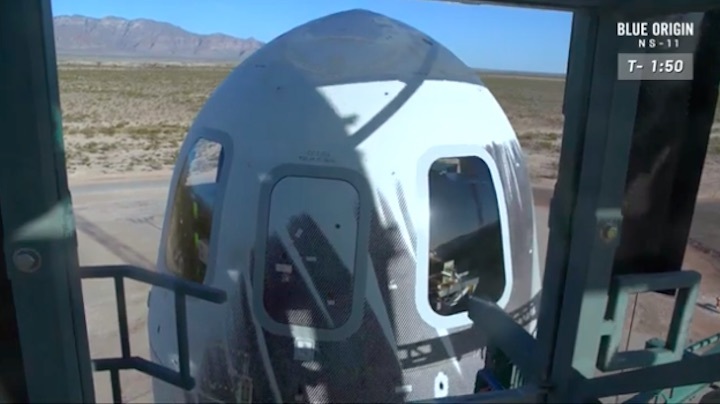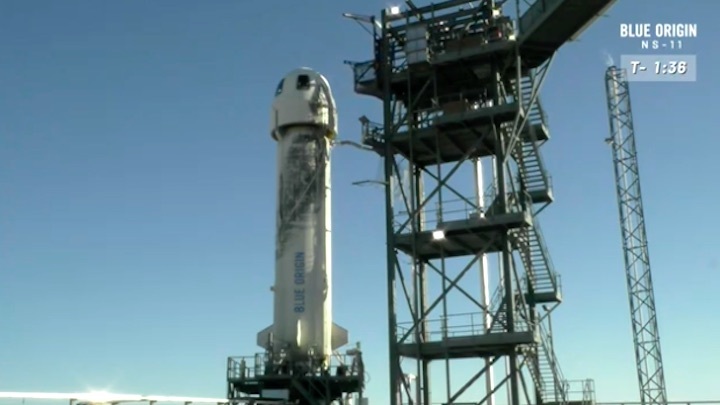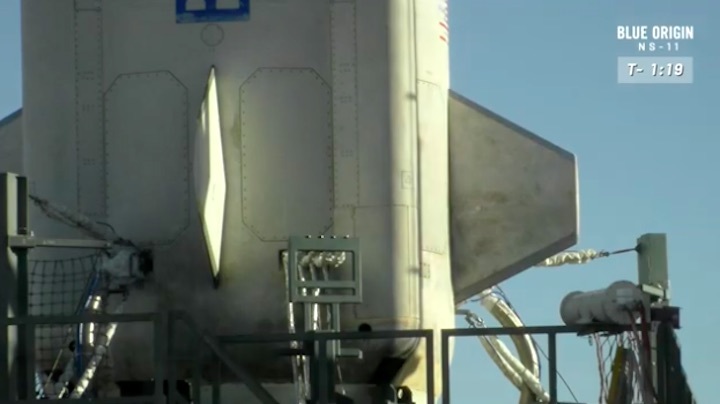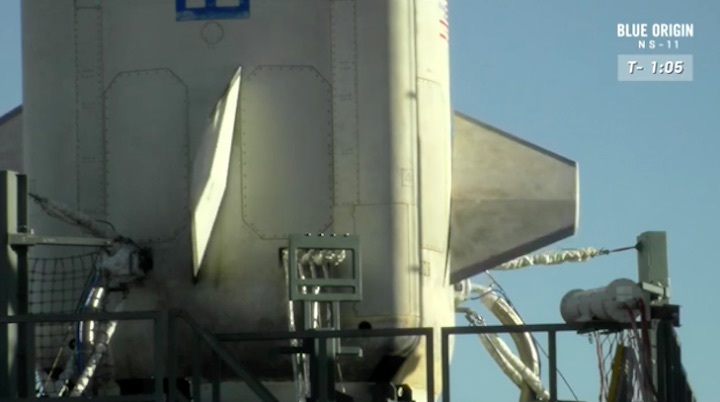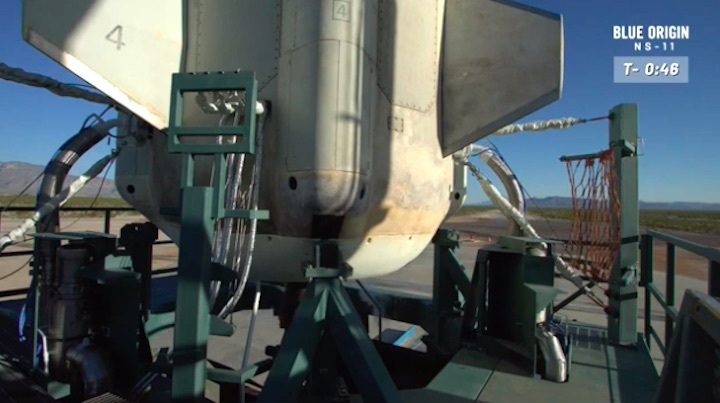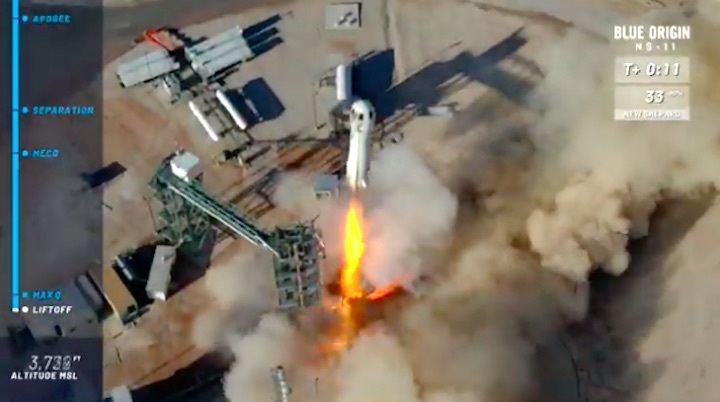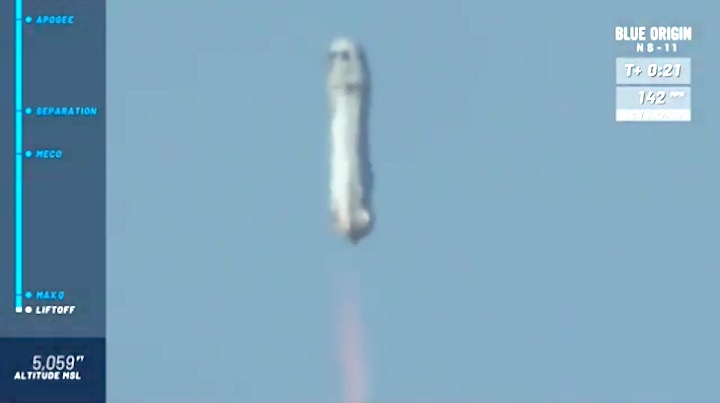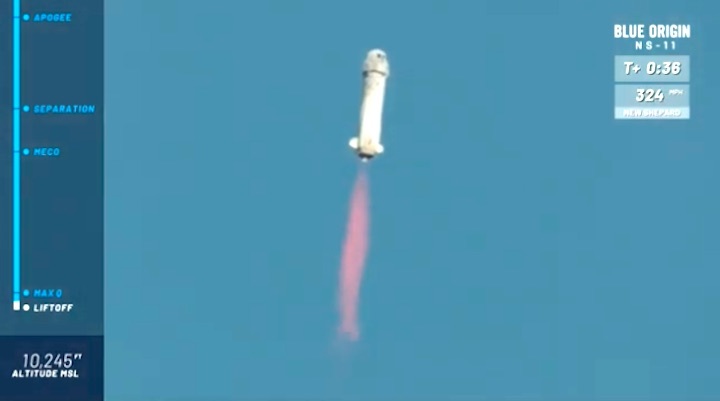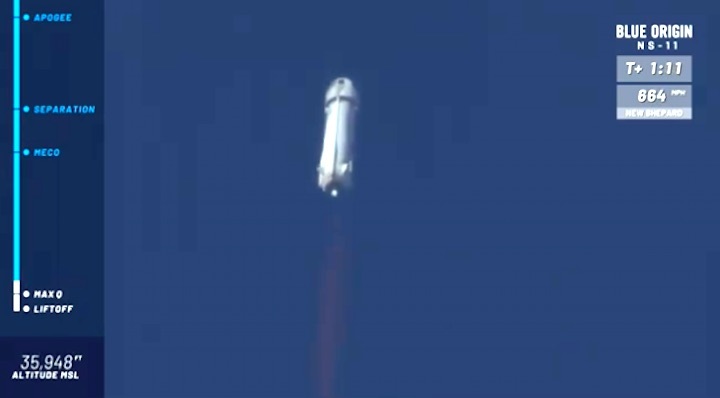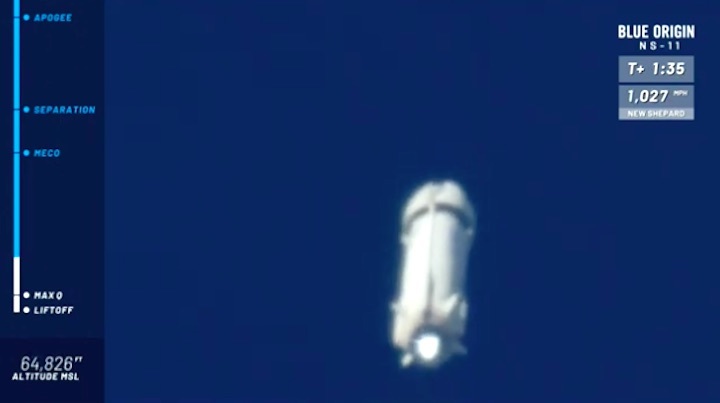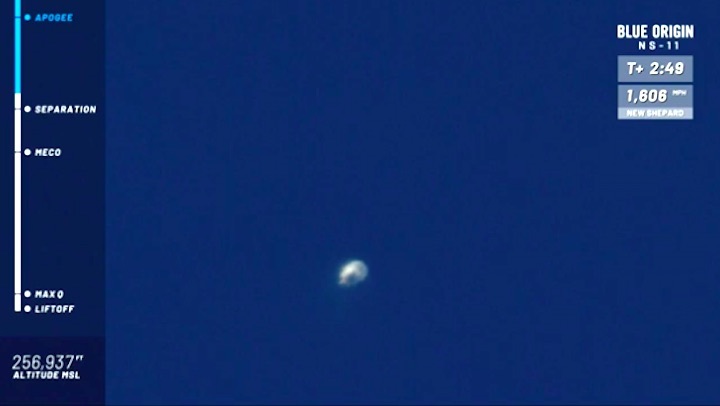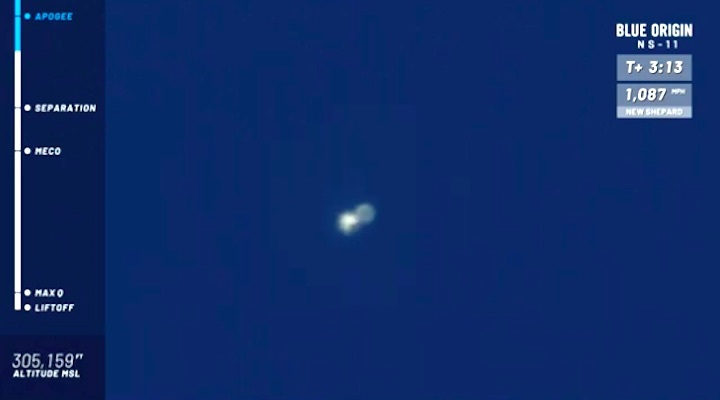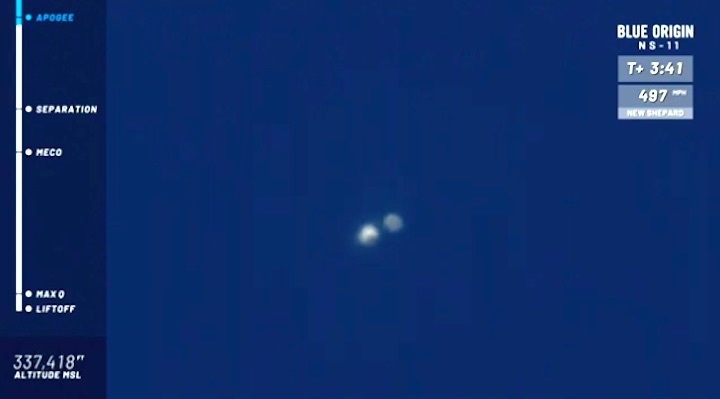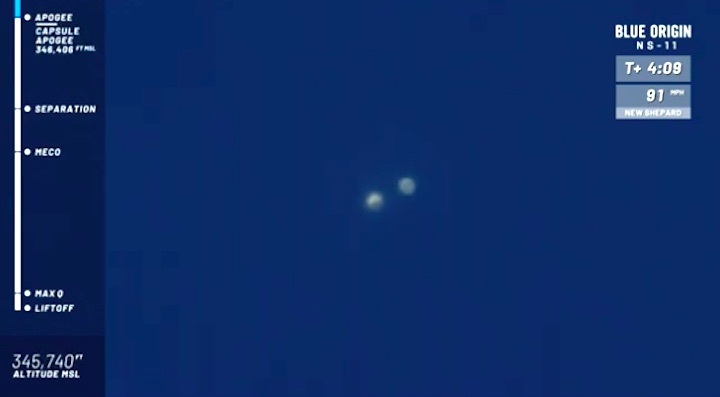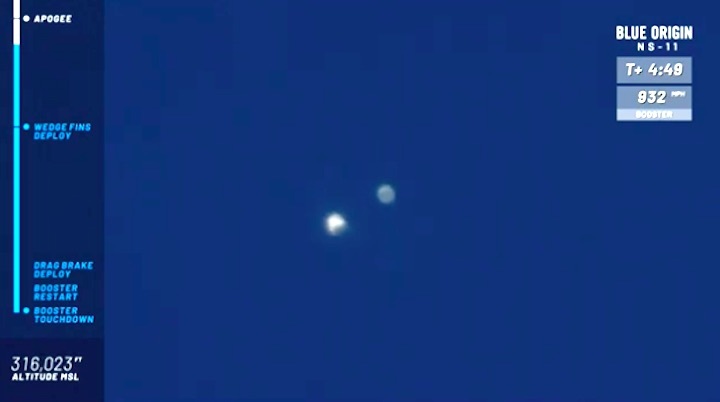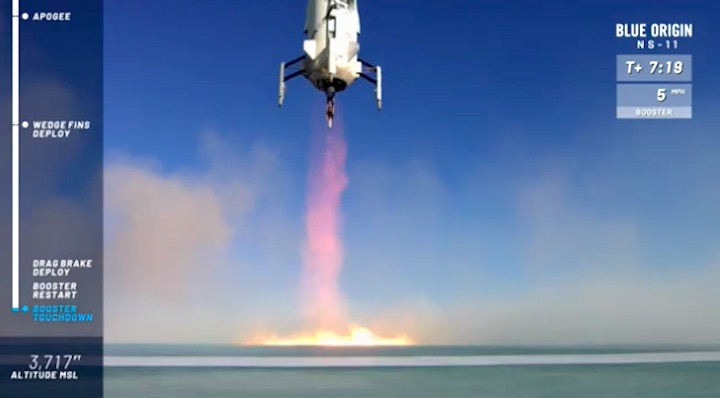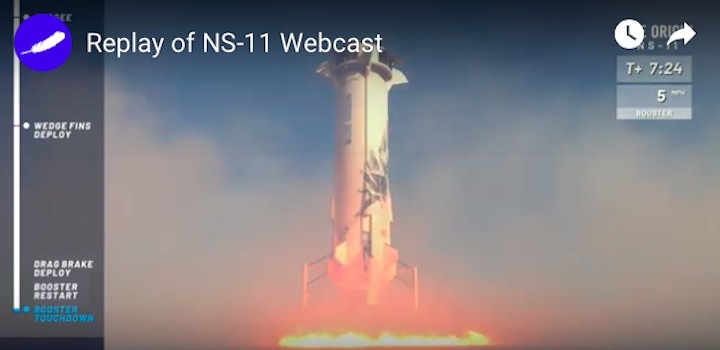2.05.2019
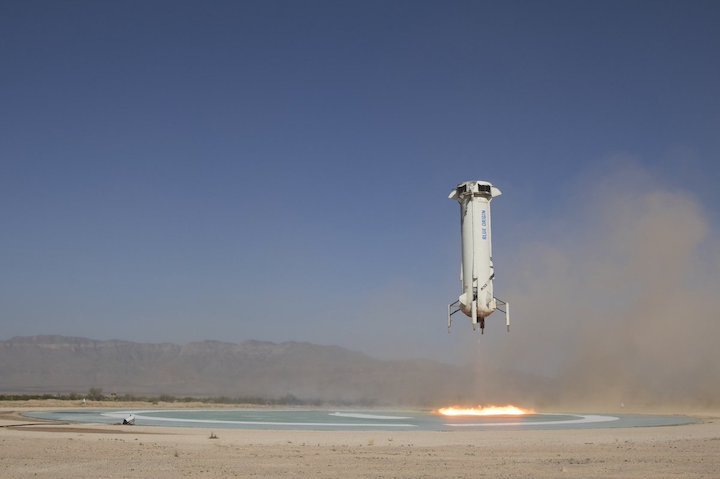
Blue Origin teams in West Texas are preparing for another launch of the company’s reusable New Shepard suborbital rocket Thursday to loft dozens of microgravity research payloads to the edge of space.
The single-stage rocket is set for liftoff from Blue Origin’s privately-operated spaceport north of Van Horn, Texas, at 9:30 a.m. EDT (8:30 a.m. CDT; 1330 GMT), the company announced Tuesday.
The mission will be the 11th flight of a New Shepard rocket since 2015, and the second New Shepard launch this year.
Blue Origin will webcast the launch, and the company’s video feed is embedded on this page.
Founded by Amazon billionaire Jeff Bezos, Blue Origin plans to fly paying passengers on future New Shepard launches. At the time of the most recent New Shepard launch in January, company officials said humans could ride the New Shepard to the edge of space and back to Earth by the end of the year.
Powered by a single hydrogen-fueled BE-3 engine, the New Shepard rocket launches vertically from a pad at Blue Origin’s remote test site in West Texas. A pressurized crew capsule on top of the rocket will carry passengers on future missions, but Thursday’s launch will loft 38 microgravity research payloads, including nine sponsored by NASA.
The BE-3 engine will fire for nearly two-and-a-half minutes to drive the New Shepard rocket into the sky. The crew capsule — without human occupants on Thursday’s flight — will separate from the top of the New Shepard booster moments later as both vehicles coast to an apogee, or peak altitude, above 62 miles (100 kilometers).
The 100-kilometer mark is known as the Kármán line, the internationally-recognized boundary of space.
The experiments carried by the crew capsule will encounter a few minutes of weightlessness as the vehicles arc over and begin falling back to Earth. The weightless conditions are similar to the environment future passengers will experience.
The New Shepard booster will deploy drag brakes during its plunge back into the atmosphere, then will reignite its BE-3 main engine to slow down for a vertical landing around 10 minutes after liftoff. Four landing legs will extend from the base of the rocket just before it settles on a landing pad about 2 miles (3 kilometers) from the New Shepard’s launch site.
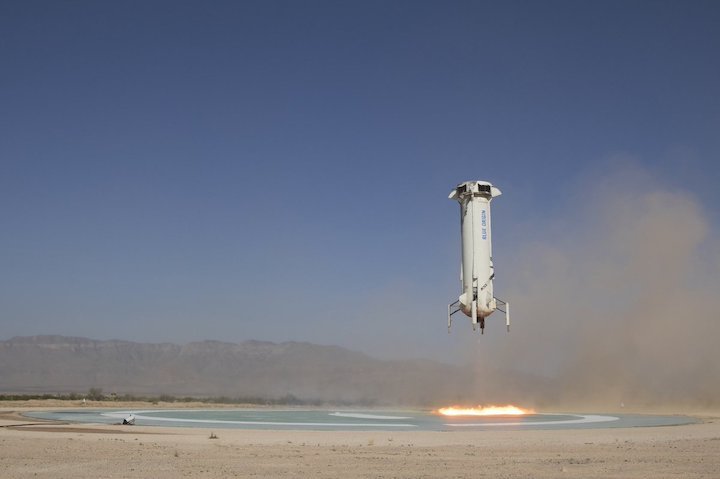
Meanwhile, the crew capsule will parachute to a landing nearby on the desert floor.
Blue Origin has flown three versions of its reusable New Shepard rocket. The first rocket was lost in a crash on landing in 2015, and the second unit flew five times before retirement. A third New Shepard vehicle has completed four successful missions.
Blue Origin delivered a fourth New Shepard propulsion module to the West Texas test site late last year from the company’s factory in Kent, Washington. Officials said the fourth iteration of the New Shepard is the rocket that will carry people.
Blue Origin has not publicly disclosed when the latest New Shepard vehicle will debut, or which flight will be the first include human passengers. In Wednesday’s announcement, Blue Origin did not say which New Shepard rocket will be used on Thursday’s flight, which is designated New Shepard-11.
The New Shepard is a stepping stone to Blue Origin’s larger ambitions, which include the development of a heavy-lift orbital-class rocket named the New Glenn. The inaugural launch of the New Glenn rocket from Cape Canaveral is scheduled for 2021.
Quelle: SN
----
Update: 3.05.2019
.

